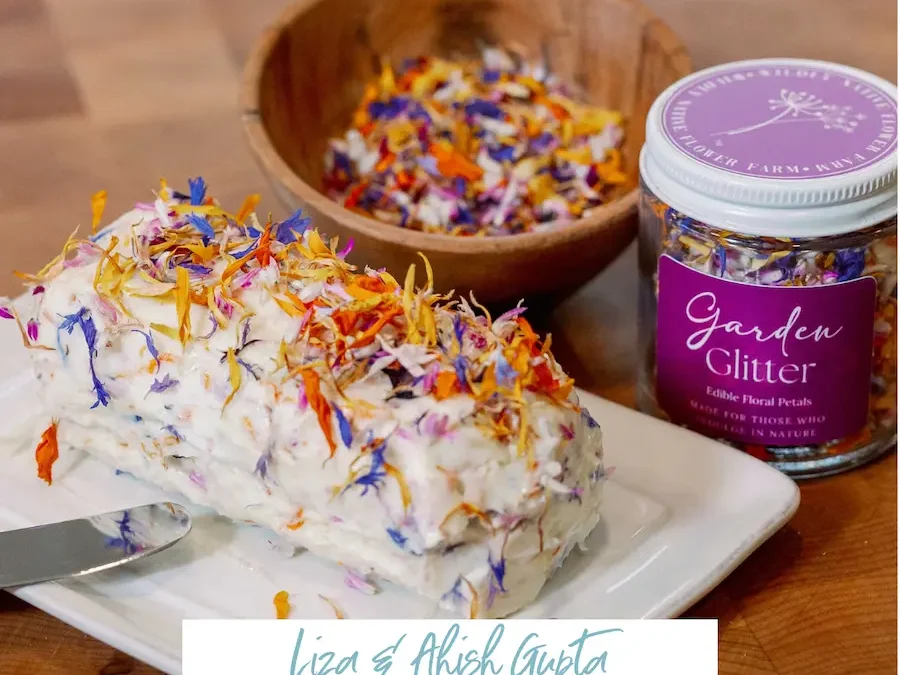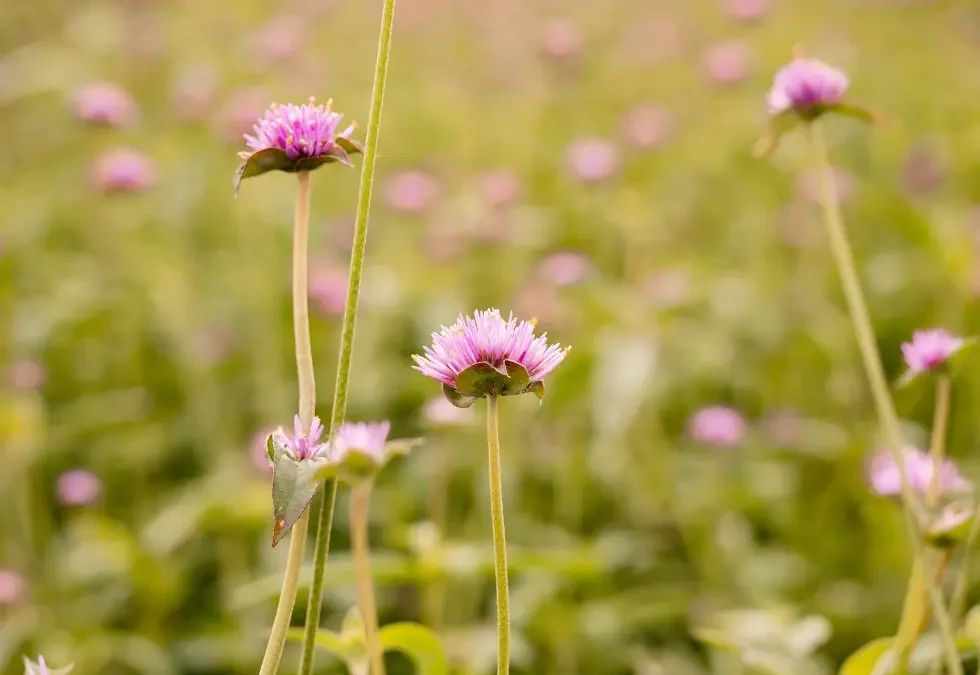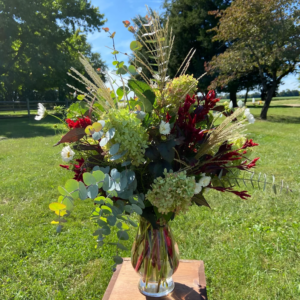
Let’s talk color—wedding color, that is. If you’ve ever scrolled Pinterest, fallen in love with a bouquet, and then realized it might not bloom in your wedding season… we feel you. One of the most common questions we get as farmer-florists is: How do I pick flowers based on my wedding date?
The short answer: let the seasons guide you.
Whether you’re planning a spring elopement, a summer soirée, a moody fall celebration, or a cozy winter wedding, the secret to showstopping florals is choosing a palette that reflects what’s naturally in bloom.
Here’s how we help couples pick the right colors—and flowers—for each season.
Spring Wedding Flowers: Texture + Romance
We love spring. It’s our favorite season for florals because of the insane texture and fresh energy that fills the fields. Spring usually runs from early April through mid-June here in Maryland (weather and deer permitting 😅).
Spring Floral Highlights:
- Pastels & Blue + White: Think ranunculus, larkspur, eucalyptus, snapdragons, peonies, agrostemma, aringium (our saving grace in the blue world), and ferns.
- Bright & Bold (Brighton Wild): Tulips, calendula, bachelor buttons, early-season peonies—if you want color that pops, spring can bring it.
- Jewel Tones: Surprisingly beautiful and underused in spring weddings. If you love depth and contrast, spring’s got the blooms—you just have to ask.
Tip: Spring is fleeting, and those peonies? We only have them for a few short weeks. If they’re a must-have, we recommend planning your date around their bloom time.
Summer Wedding Flowers: Vibrant & Lush
Summer brings the heat—and a bold color palette to match. From late June through August, our fields explode with sun-loving blooms that bring personality and structure to your floral design.
Summer Floral Highlights:
- Blue + White: Hydrangeas, lisianthus, wax flower, allium, eucalyptus, and Veronica thrive in early summer.
- Brights & Wildflowers: Zinnias, marigolds, celosia, dahlias, gerbers—if you say “wildflower wedding,” this is your moment.
- Jewel Tones: Reds, magentas, deep purples. Great for bold couples looking to make a visual statement.
- Pastels: Tricky but possible. Fewer blooms lean pastel in peak summer, but we can source or style around it.
Real wedding inspo: Kylie’s blue and white wedding is a forever favorite. She trusted us with her palette and gave us freedom to mix texture and tone—it’s one that couples still reference constantly.
Fall Wedding Flowers: Texture, Color & Meaning
Fall is pure magic. We love summer, but autumn brings a warmth and moodiness that’s unmatched. Plus, it bridges two floral worlds: late summer’s bounty and fall’s grounded, earthy tones.
Fall Floral Highlights:
- Harvest Hues: Dahlias, celosia, eucalyptus, zinnias, dried grasses, and personal elements like lotus pods or heirloom textures.
- Brighton Wild (Fall Edition): Dahlias meet zinnias, summer meets fall. Add in hearty greenery and jewel-tone flair.
- Jewel Tones: Deep, rich, dramatic. Think magenta, plum, ruby, and burnt orange.
- Pastels & Neutrals: Still doable—with creamy whites, pale pinks, mauves, and textural fillers like astilbe or Veronica.
Farm fact: Fall flowers are more resilient to chill. We can even blend in dried or foraged pieces for a totally custom look.
Winter Wedding Flowers: Unexpected Beauty
Winter is quieter in the fields, but still full of possibility. While bloom selection is more limited, this is where texture and creativity shine.
Winter Floral Highlights:
- Greens & Berries: Eucalyptus (which blushes red in cool temps), ilex berries, seed pods, and crepe myrtle textures.
- Whites & Neutrals: Stock, wax flower, dusty miller, pinecones, and even foraged foliage.
- Dried Florals: Gorgeous when done intentionally. You either love them or you don’t—we’re here for both.
- Farm + Wholesale Combo: For must-have blooms like orchids or gardenias, we can responsibly source through our licensed wholesalers to support your vision.
Tip: We’ll always tell you what’s realistic for your season. We love a good mood board, but Pinterest doesn’t know what’s blooming in Maryland in November 😉
Common Questions We Hear (and How We Answer)
What if I want peonies in the fall?
We get this a lot. Peonies are a short-season flower—usually only around in late May to early June. To have them in October? They’ll need to be shipped, and that comes with higher costs and risk (and sometimes they’re just not available). We can suggest dahlias or ranunculus as seasonal, affordable alternatives with a similar softness and drama.
What if I have no idea what I want?
That’s what we’re here for! We’ll ask about your favorite colors, textures, flower types (hydrangeas or celosia? feverfew or zinnias?), and build from there. The more you trust us, the better your florals turn out—promise.
Can I include dried flowers or houseplants?
Yes! We love dried accents for texture, sustainability, and uniqueness. Some couples even mix in air plants, potted herbs, or heirloom pieces like saved lotus pods or antique vases. If it feels personal and intentional, we’ll find a way to make it beautiful.
Let the Season Guide You
We’ve said it before and we’ll say it again: your flowers should be a reflection of your love and your season. Picking a color scheme that’s rooted in what’s naturally blooming creates a wedding experience that feels organic, effortless, and memorable.
So browse those Seasonal Galleries on our site, get inspired, and then come talk to us. We’re here to make sure your flowers fit your vision and the field.











